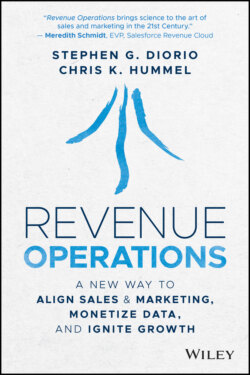Читать книгу Revenue Operations - Stephen Diorio, Chris K. Hummel - Страница 26
CHAPTER 2 Create Value and Impact from Revenue Operations
ОглавлениеWe interviewed and surveyed hundreds of business leaders as part of our primary research. These included CEOs and leaders of growth-oriented businesses, large and small. In parallel we worked with the leading academics across the disciplines of marketing, sales, and service, as well as experts in areas like customer analytics, sales enablement, and marketing technology. Our research team evaluated thousands of technologies that are shaping and enabling the modern commercial model.
Most of the executives we interviewed described Revenue Operations as a system (or commercial model) for generating more sustainable and scalable business growth. The majority told us that Revenue Operations is an important if not existential business issue. They also felt that it was not fully developed as a business discipline, but it must become one because everyone will need to understand better if they expect to do their jobs, get promoted, and succeed in the marketplace.
Given the volume of online discussion traffic on the topic, it seems like many organizations are trying to deploy Revenue Operations in some form. Current research estimates project high levels of Revenue Operations adoption, particularly among smaller business-to-business organizations and technology businesses shifting to a recurring revenue model. For example, Forrester Research suggests over two-thirds of organizations have already deployed Revenue Operations – either partially (58%) or fully (an additional 10–15%).127 Gartner forecasts that most (75%) of the highest-growth firms will have deployed a Revenue Operations model by 2025.17
In a broad sense, these forecasts are correct. The executives we spoke with intuitively know they must do more to align their teams and get technology working harder for them. Most of them are actively taking steps toward unifying marketing, sales, and service.
The leaders we interviewed regard these projections with a mix of urgency, optimism, and caution. These rosy adoption forecasts create a certain fear of missing out on a big thing and an urgency to act faster, yet they also give pragmatic executives pause. While most agree that Revenue Operations is a good thing, nobody has really defined it nor demonstrated the depth of how it can work. The how needs to be laid out, too.
More than 90% of the senior executives we spoke with were not clear on what exactly a Revenue Operations model meant – or how exactly it will pay off. This includes CEOs and executives who were actively taking steps toward unifying sales, marketing, and service.
This is not surprising because describing Revenue Operations is similar to describing great art, writing, or music. Most people agree it's a good thing, and everybody seems to know it when they see it, but few people can describe it. This ambiguity has allowed at least a dozen inconsistent definitions of Revenue Operations to flourish in written research, analyst reports, and software marketing and ads. These definitions range from a methodology to a strategy to a job function, software platform, and organization design.
This wide variety of inconsistent descriptions creates a practical challenge. If nobody agrees or understands what Revenue Operations is, how can analysts empirically prove that companies that deploy Revenue Operations are growing sales and creating value? If you cannot quantify the value of Revenue Operations, how can you size and sequence the effort involved in achieving it?
This book will lay out a clear execution blueprint for the individuals who must make Revenue Operations a reality – from the CEO to operations professionals to sellers engaging customers on the front line.
